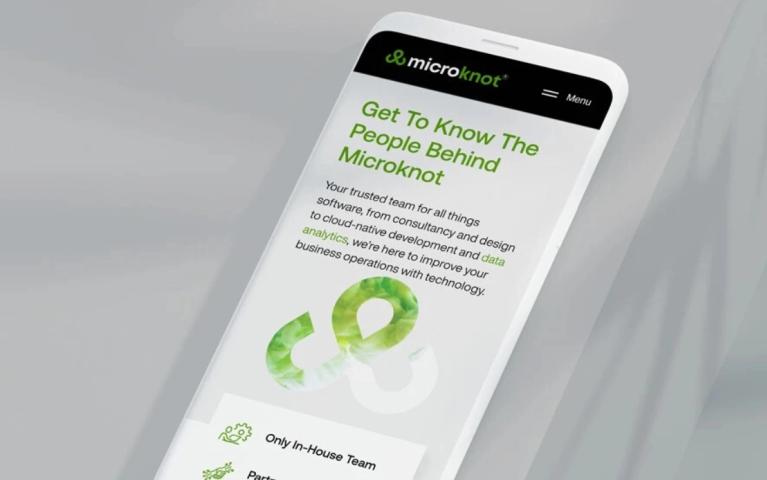Introduction
The AS400 (now known as IBM i) has been a reliable workhorse in enterprise computing for over three decades. Known for its stability, security, and integrated database management, it remains a critical platform for industries like banking, healthcare, and manufacturing. However, as digital transformation accelerates, businesses must modernize their AS400 applications to keep up with cloud computing, artificial intelligence (AI), and agile development practices. This blog explores the future of AS400 application development, highlighting key trends, innovations, and strategies to ensure the platform remains relevant in an evolving technological landscape.
Understanding AS400 (IBM i) in the Modern Era
Originally launched in 1988, the IBM AS400 was designed as a mid-range business computing solution. Its integrated architecture, featuring the Db2 database and robust security, made it a favorite among enterprises. Today, rebranded as IBM i, it continues to power mission-critical operations due to its unmatched reliability and low downtime. However, challenges such as an aging developer workforce, reliance on legacy programming languages like RPG and COBOL, and difficulties integrating with modern systems threaten its long-term viability. The future of AS400 depends on modernization—leveraging cloud computing, AI, and open-source technologies while preserving its core strengths.
Current Challenges in AS400 Application Development
Despite its strengths, AS400 faces several hurdles. The most pressing issue is the shrinking talent pool—fewer developers are proficient in RPG and CL (Control Language). Additionally, legacy codebases are often monolithic, making them difficult to update or integrate with modern applications. Many organizations still rely on green-screen interfaces, which are outdated compared to today’s web and mobile experiences. Furthermore, integration with cloud services and SaaS applications can be complex, and the rising cost of maintaining aging systems is a growing concern. AS400 application development plays a crucial role in overcoming these challenges by enabling businesses to modernize their systems, enhance functionality, and ensure seamless integration with modern technologies while preserving core operations.
Key Trends Shaping the Future of AS400 Development
1. Cloud Integration and Hybrid Solutions
Many enterprises are adopting IBM i on cloud platforms like AWS, Azure, and IBM Cloud. A hybrid approach allows businesses to maintain legacy applications while leveraging cloud scalability and flexibility. This shift reduces infrastructure costs and enables seamless integration with modern SaaS solutions.
2. Modernization of Legacy Applications
Modernizing AS400 applications involves refactoring RPG code to free-form RPG, which offers a more readable and maintainable syntax. Another key strategy is web and mobile enablement, using tools like Lansa and Profound.js to create user-friendly interfaces. Additionally, organizations are moving from traditional DDS (Data Description Specifications) to SQL-based database management for better compatibility with modern systems.
3. AI and Machine Learning Integration
IBM’s Watsonx platform is bringing AI capabilities to AS400 environments. Businesses are using AI for predictive analytics, fraud detection, and automated customer service. For example, banks can analyze transaction patterns in real-time to detect anomalies, while manufacturers can predict equipment failures before they occur.
4. DevOps and Agile Methodologies
The adoption of DevOps practices is transforming AS400 development. Continuous Integration/Continuous Deployment (CI/CD) pipelines, powered by tools like Jenkins and GitLab, are reducing deployment cycles and improving software quality. Agile methodologies are also being applied to legacy systems, enabling faster iterations and better alignment with business needs.
5. Enhanced Security and Compliance
With increasing cyber threats, AS400 systems are adopting multi-factor authentication (MFA), end-to-end encryption, and zero-trust security models. Compliance with regulations like GDPR and HIPAA remains a priority, driving investments in advanced security frameworks.
6. Low-Code/No-Code Development
Platforms like Mendix and OutSystems are enabling faster application development on AS400 with minimal coding. These tools allow business users to create applications using drag-and-drop interfaces, reducing reliance on specialized RPG developers.
7. Blockchain for Secure Transactions
Financial institutions are integrating blockchain technology with AS400 for secure, tamper-proof transaction ledgers. This innovation enhances transparency and reduces fraud in payment processing and supply chain management.
Innovations in AS400 Development Tools & Technologies
IBM i 7.5 and Beyond
The latest IBM i updates introduce native support for open-source languages like Python and Node.js, making it easier to develop modern applications. Enhanced RESTful API capabilities allow seamless integration with cloud services, while improvements in Db2 for i enable better performance and scalability.
RPG Modernization
The shift from fixed-format to free-form RPG simplifies coding and improves maintainability. Additionally, SQL integration allows developers to use modern querying techniques instead of traditional DDS.
Open-Source Adoption
AS400 is embracing open-source technologies, with Python for data analytics, Node.js for backend services, and PHP for web development. This trend is reducing dependency on proprietary languages and attracting a new generation of developers.
API-First Development & Microservices
Organizations are breaking monolithic AS400 applications into microservices, improving scalability and flexibility. IBM API Connect facilitates seamless API management, enabling smoother integration with modern applications.
IBM Watsonx and Cognitive Computing
AI-powered tools like Watsonx are enabling advanced analytics on AS400 data, helping businesses make data-driven decisions. Use cases include customer sentiment analysis, predictive maintenance, and automated fraud detection.
The Role of AS400 in Digital Transformation
Despite the rise of newer platforms, AS400 remains indispensable in industries requiring high availability, security, and transaction integrity. Banks rely on it for core processing, healthcare organizations use it for patient records, and manufacturers depend on it for ERP systems. By modernizing AS400 applications, businesses can achieve cost efficiency, improved agility, and a competitive edge in digital transformation.
Case Studies: Successful AS400 Modernization Projects
Case 1: A Global Bank’s Core System Upgrade
A major bank struggled with outdated green-screen interfaces that slowed customer transactions. By adopting Profound.js, they modernized their AS400 applications with web and mobile interfaces. The result? Faster transactions, improved user experience, and reduced training costs for employees.
Case 2: Manufacturing ERP Migration to Cloud
A manufacturing company faced high costs maintaining on-premise AS400 servers. After migrating to IBM i on Azure, they reduced infrastructure expenses by 40% while gaining better scalability and disaster recovery capabilities.
Future Predictions: What’s Next for AS400?
Looking ahead, AS400 will continue evolving with:
Increased AI and automation (e.g., robotic process automation for AS400 workflows).
Quantum computing readiness (IBM is already exploring quantum integration).
More open-source adoption (could Rust or Go be the next languages on IBM i?).
Accelerated cloud migrations as businesses seek cost savings and flexibility.
Conclusion
The AS400 (IBM i) platform is far from obsolete—it’s adapting to the future. By embracing cloud computing, AI, DevOps, and open-source technologies, businesses can extend the lifespan of their AS400 systems while staying competitive. The key to success lies in modernization, integration, and innovation. Organizations that invest in upgrading their AS400 applications today will reap long-term benefits in efficiency, security, and digital transformation.









